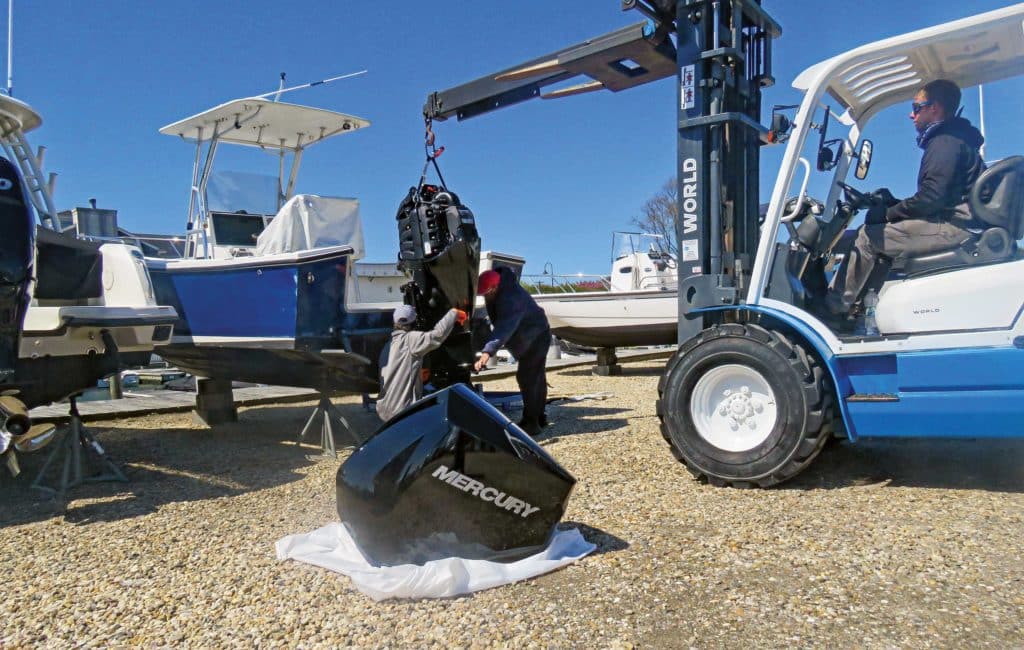
Repowering your boat ranks right up there with buying a new boat. For many, myself included, repowering is an exciting time in which a boat that suits me perfectly becomes even better. That’s especially true today because new engines deliver more benefits than older ones.
Just what do you get when you repower? Certainly, increased reliability is one aspect. But how else will you benefit? Should you sell or trade up to a new boat instead?
Having just repowered my 23 Regulator with a new 250 hp Mercury FourStroke outboard, I’ll present these issues and more from a fresh, first-person outboard owner’s perspective. We have sterndrive and inboard repower stories in the hopper, but many of the reasons why apply here.
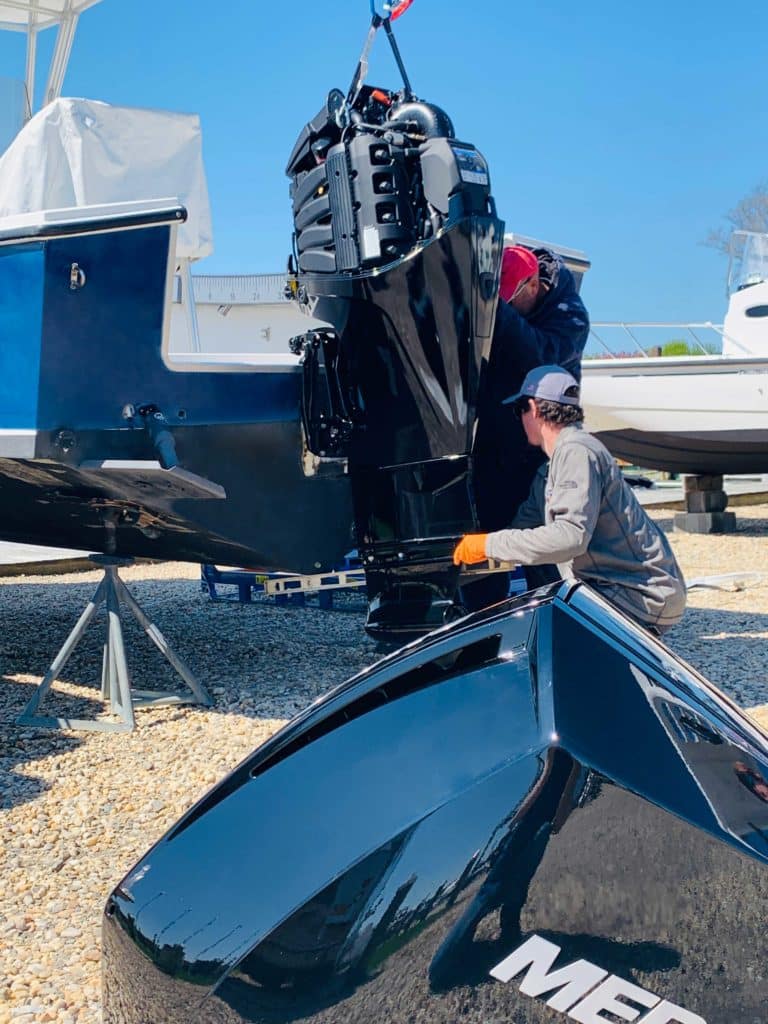
The Candidate
A boat that suits your style and needs makes a good repower candidate. Many times as life changes happen, such as a marriage, kids leaving the house, or a new career, our boating needs change. Before you repower, make sure your current boat still suits the way you boat. Sometimes, buying a new or another boat (which you may repower) might make more sense for you. My center-console still fulfills my needs, which consist of about 80 percent coastal fishing and 20 percent tubing, beaching and otherwise day cruising. So, appraise your boating needs honestly.
If it does suit you, and you want to repower, make sure that it is structurally sound. You may or may not be qualified to assess this yourself, and a marine surveyor—or at least a knowledgeable and trusted friend or dealer—should be brought in to render an opinion before you proceed with a repower. More reputable dealers, such as Hampton Watercraft and Marine, which performed my repower job, will not proceed unless they deem the boat structurally sound. Some areas of key concern are the transom and the stringers. My 1997 Regulator, with its fiberglass grillage system and composite transom, needed no structural work. In any event, the need for structural repairs does not eliminate a boat from repower contention, but it needs to be ascertained so that repairs can be factored into the total cost of the job. A new transom might be a $4,000 job, as an example.
Besides structural work, your candidate boat should be assessed for the suitability of its systems. The new Mercury V-8 FourStroke I repowered with requires batteries rated at 800 cold-cranking amps, and that required me to upgrade to a new pair of Optima Blue Top series batteries (about $700). I also installed new battery cables. Additionally, I elected to keep my boat’s existing hydraulic steering system—power steering is great, and a benefit I’ll discuss further along—because I wasn’t willing to give up the space required for the steering pump and motor, given the limited space for such systems aboard my older, cut-transom boat. The choice to upgrade steering or to retain existing steering provides those repowering their boats with an option to save both space and money. For example, single-engine power steering costs about $1,200 in major parts, plus installation; a twin setup starts at $1,600 or so, plus installation. And if you are going with twins—or triples, quads or quints—know that joystick docking and maneuvering is a feature you might consider when repowering your boat.
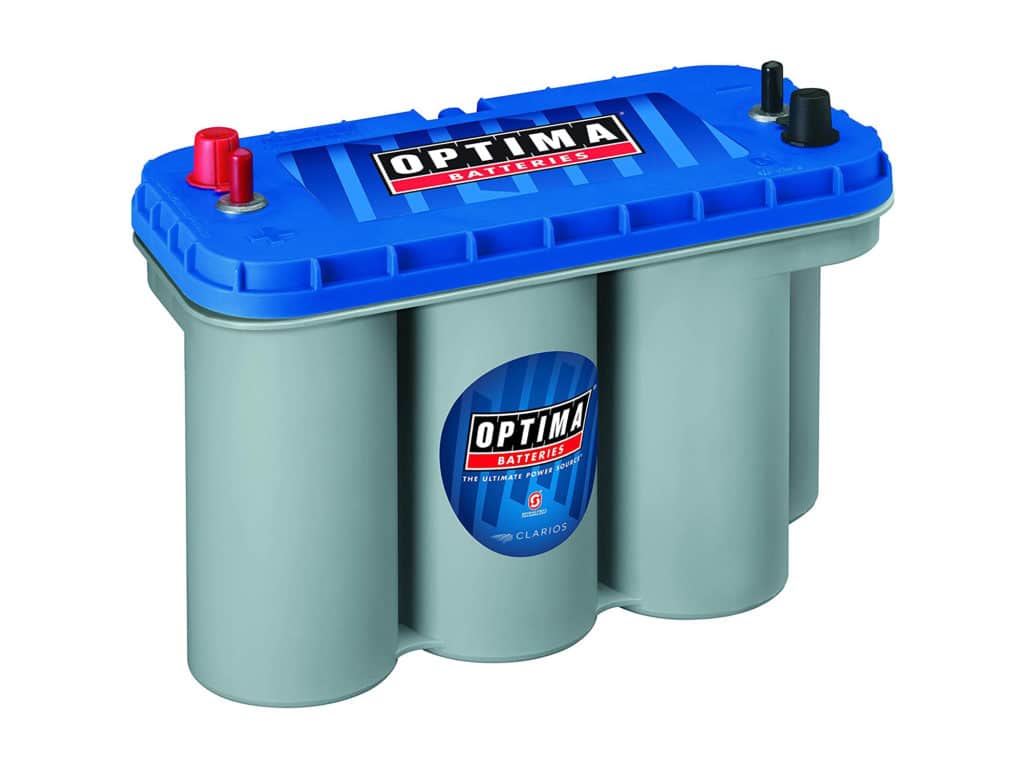
Finally, you may have to reconfigure your helm’s gauge array when you repower. Mercury—as well as other engine-makers—offers digital displays and gauges that fit standard gauge holes. (And you can choose analog gauges and controls to save on cost.) These offer great functionality, and are especially suited to tight helms or where less time and expense to install are priorities. In my case, I opted to move from analog gauges to touchscreen multifunction displays, in the form of Mercury’s VesselView displays. This required a network backbone to be installed in the boat, for one thing. For another, it necessitated fabricating a completely new helm panel, a task I completed as a DIY project prior to delivering the boat to the installing dealer. A quality, full-service dealer will be capable of performing this task as well, and you should ask about it and to see examples of their work before committing to the repower. Such jobs will be billed by the hour and for parts and materials.
The Power
A new engine or engines may be your opportunity to increase horsepower or to change the number of engines. In the first case, you cannot repower your boat with an engine or engines that exceed its rating. No reputable dealer would ever do that, and no insurance company will write you coverage if you could get it done. So, remove having the world’s fastest Acme Waterbug 27 from your repower wish list.
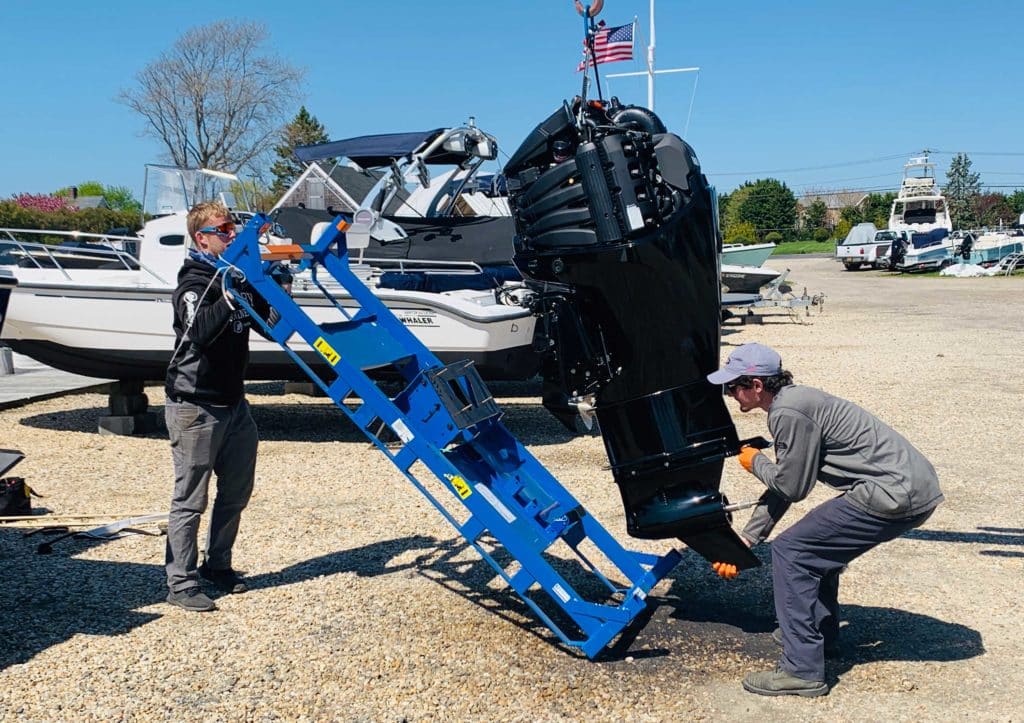
My Regulator is rated for twins up to 400 hp, though I have been running it happily with a single 250 hp for many years. In deciding to repower with a single 250, I considered the increased reliability of engines; the weight of the new engines and the effect of that weight on the boat’s self-bailing ability, as well as performance and economy; the cost of owning one versus two engines; and the cost of owning a more powerful single engine. For me, with my boat and my intended use, the single was the right choice. I have run the boat with other engines and in both single and twin configurations. I realize not everyone is privileged with the access to boats that I enjoy, but if you seek out boaters at a local marina with similar boats, they will often be happy to take you out on a brief demo ride. A good dealer may also provide access to stock or customer boats for a sea trial, perhaps after a deposit is laid down, before you make your final decision.
In my case, the new outboard produces the same power as the previous boat, but weighs 90 pounds less and is a V-8 instead of a V-6. My boat is now a bit faster and a bit more economical, and there is another quarter-inch between the waterline and the scuppers.
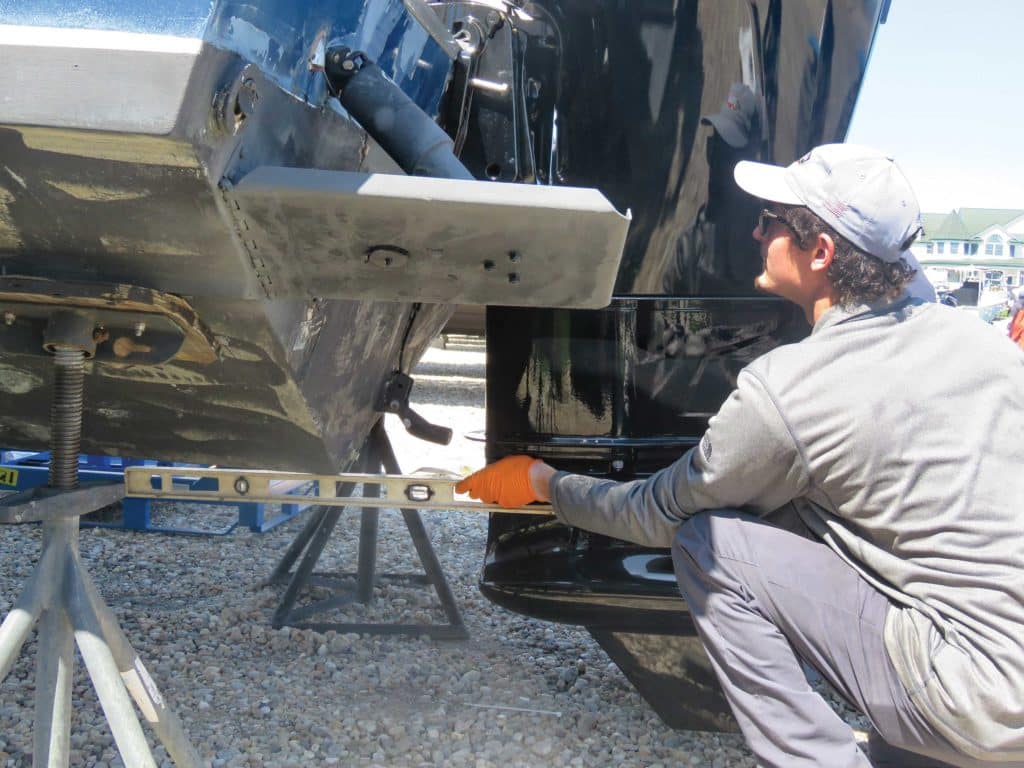
My choice was right for me. Your choice may differ depending upon your circumstances. The point is to weigh these factors because these decisions must be made thoughtfully if a repower is to be successful—successful meaning that it includes you being happy as well as all the rest of the factors.
The Benefits
Most of the time, brand-new power under factory warranty delivers confidence and reliability, restoring fuller peace of mind to the boater. That’s great. It’s also obvious. What other reasons are there for repowering your boat? Well, certainly I’d have to also include pride in ownership, the savings of not buying a new boat, and the enhanced resale value for your boat. More tangible examples of things I directly benefited from after repowering follow.
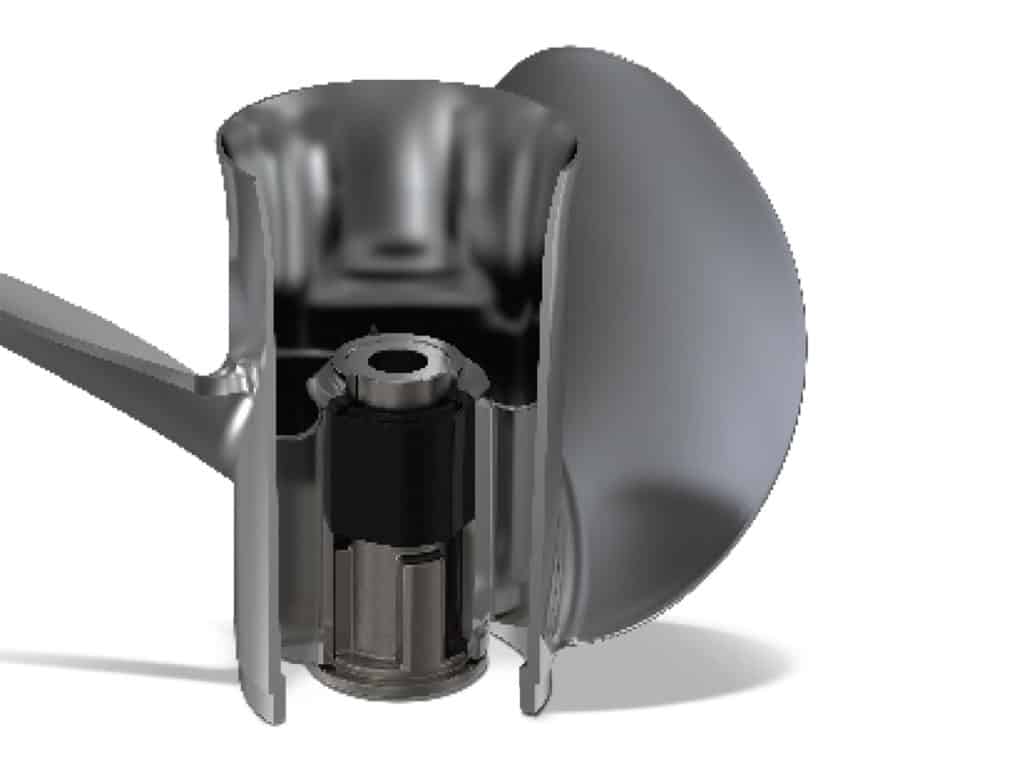
My boat is 3 mph faster at wide-open throttle (43.2 vs. 40 mph) and delivers better economy at cruising speed, burning 8 gph at 22 mph (3,500 rpm) and 13 gph at 30 mph (4,200 rpm). And boy, is it quiet. I mean, it’s not just 2 decibels quieter while cruising than previous engines I’ve owned on this boat, but it sounds better too, emitting a deep, throaty note that appeals to this child of the muscle-car era. Every boating friend I’ve had aboard has commented positively about the way my new engine sounds. The most astute of them have also noted the lack of clunking while shifting, a result of the FLO-Torq SSR HD prop hub. Mercury actually has a lab devoted to a process that it calls NVH (noise vibration harshness). Newer engines offer smoother shifting, and a quieter, more pleasant audible experience while running.
Some other physical attributes that I consider beneficial include the ability to check the engine oil without removing the cowl. Open the Top Cowl Service Door—it pushes open like a fuel door on a car or truck—and the dipstick and oil fill are right there. This hatch also conceals a big lever handle that allows unlatching and removing the cowl one-handed. It comes off and goes back on easily. Once off, you’ll find neat features, like a maintenance schedule sticker you can scan with your phone and more. The freshwater flush attachment is located where it is easy to access whether you trailer your boat or keep it in the water. Maintenance is easier with a new engine.
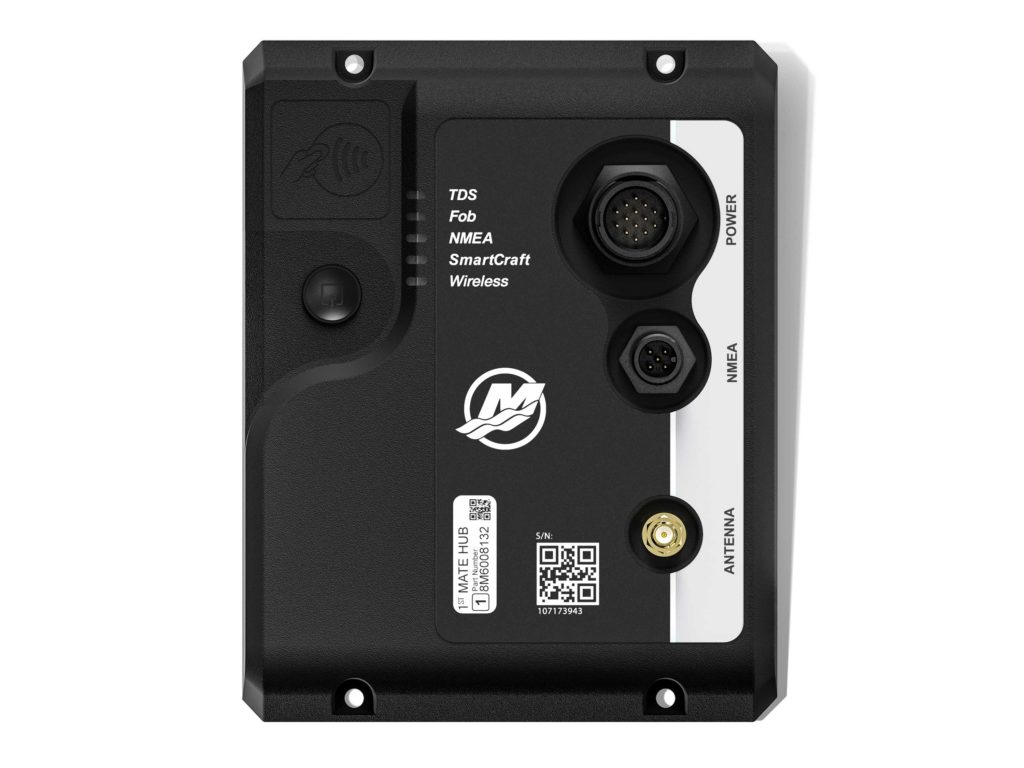
But most of all, a new engine or engines are an opportunity to bring your boat into the digital age, and with that comes many benefits, from the aesthetic to the functional to the just plain cool. A NMEA 2000 (N2K, or Merc’s version, called SmartCraft) backbone will be installed in your boat, creating a network into which the new engine(s), controls, gauges and displays, as well as other equipment, such as stereos, fish finders and plotters, and a host of onboard sensors, can all be added for easy monitoring and control. For instance, I can display a host of engine data onscreen or on any of the other screens aboard that I’ve networked. I can mix this data with mapping, fish finding, autopilot and more, all depending upon my preference. Want big tachs and fuel info while running? Swipe the screen. Want stereo control? Swipe it again. Control over tow profiles for watersports? Just swipe and it appears. Additionally, with the right accessory plugged in, I can access these functions, in Mercury’s case, via the VesselView Mobile app. It turns my wireless device into a backup gauge array and/or a second station. The system provides alerts for maintenance such as oil changes and fuel filters, and can monitor ship’s systems such as CO monitors, tanks and more. Moreover, the networked controls provide push-button starting (so you can hide the key switch, if you like), and also enhance security because the engine will not start—it cannot be hot-wired like an older outboard—unless the key fob is on board. So, repowering nets you greater monitoring and control of everything, from fuel economy to the CO detector in the forward stateroom, plus provides several levels of redundancy and adds a measure of security.
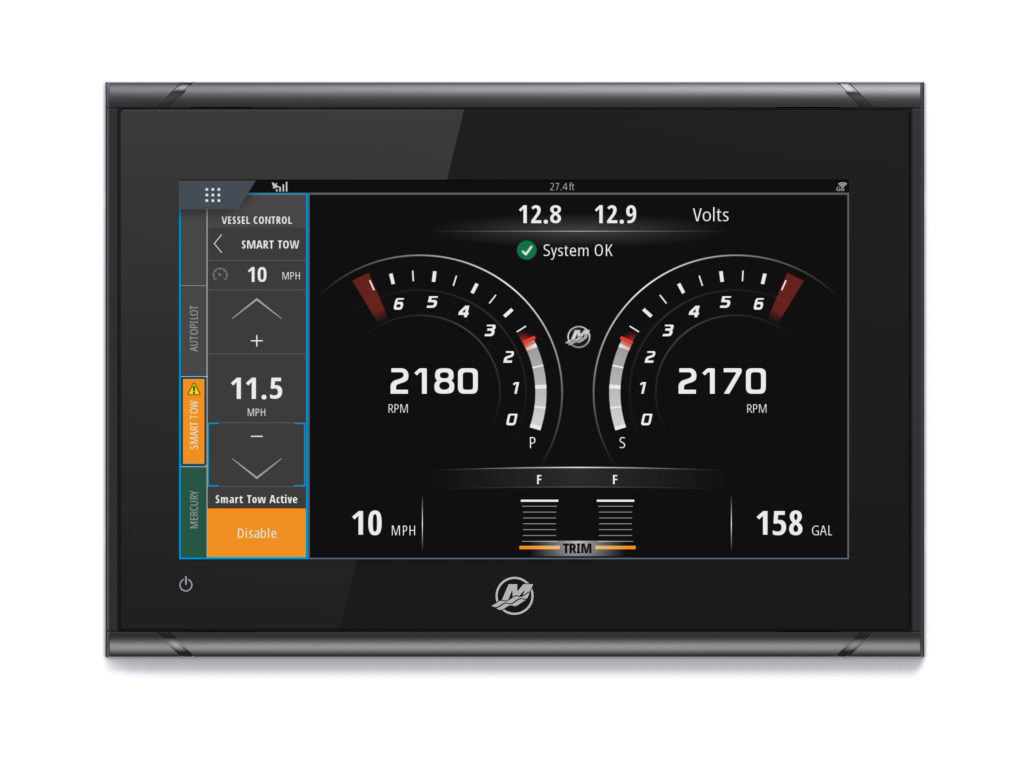
When running the boat, a networked, digital engine such as my Mercury 250 FourStroke offers a host of benefits. For instance, there’s ActiveTrim, which automatically trims the engines to suit the circumstance, based upon GPS boat speed (competitive systems use engine rpm). I’ve been running outboards for about 45 years, and I can’t beat ActiveTrim. For 90 percent of my boating, it’s set it and forget it—the system trims the engines exactly as I would. As experienced boaters know, proper trim is key to maximize fuel efficiency. ActiveTrim can be turned on or off at will, and though it works fine out of the box, you can set the profile—the range of trim—and customize it to suit your boat.
Digital Throttle and Shift (DTS) is Mercury’s name for digital controls. But by any name, these provide some great differences compared to cable controls. Digital control handles move at the touch of a finger, and the levers don’t fall back and throttle your engine down due to cable tension and boat motion. Also, you can adjust rpm in fine increments using the digital display, which I find great for trolling and really dialing in a precise rpm for long cruises on open water. This works hand in hand with the Adaptive Speed Control my new outboard offers, a feature that maintains rpm even as load changes. For me, that means that while running in a following sea offshore, the engine doesn’t bog down and require me to accelerate on the back of every wave. If you cut tight turns or tow skiers, you’ll find the same thing—the engine maintains rpm. So, let’s add increased and easier boat control to our list of repower benefits.
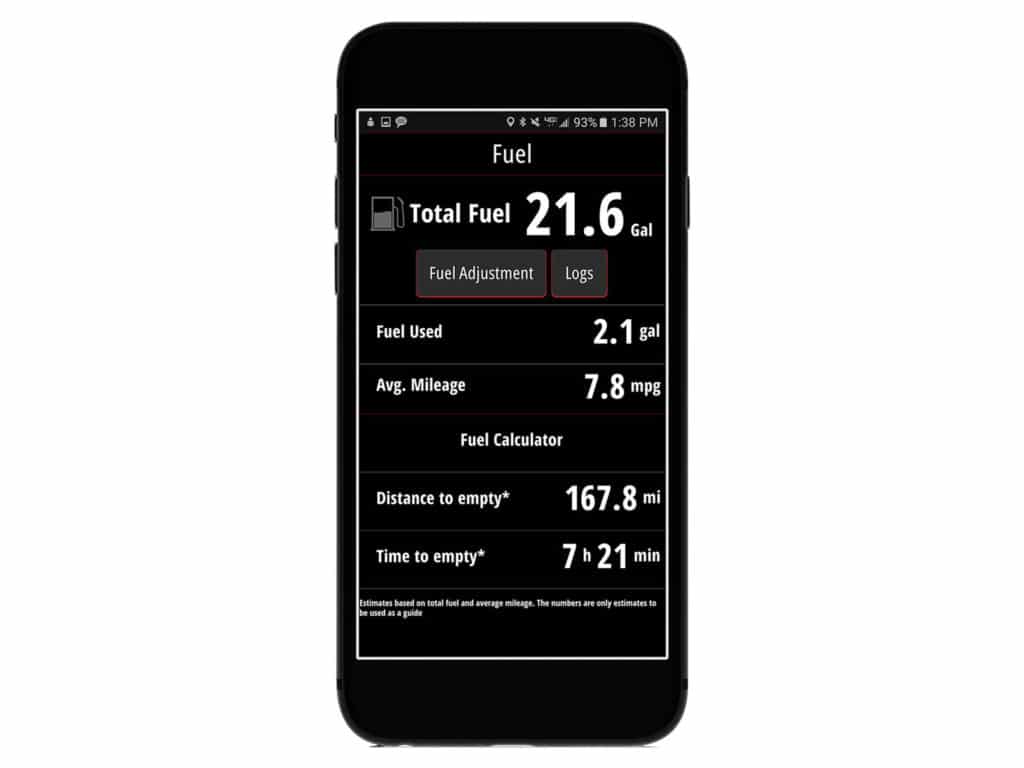
There’s more. Tow Mode makes it easy to pull your skiers and riders with more precision, every time. My new engine’s alternator outputs a whopping 85 amps max and 20 amps at idle, and the engine automatically bumps up the idle rpm if it senses low batteries. Couple features as diverse as these with the others mentioned, and that’s at least 17 reasons to repower.
Oh, my new outboard also looks great, and it is available in a range of colors, as are those from other engine-makers. Feel free to add in bragging rights as another reason to repower.
Dealer Does the Install
Gone are the days of buying outboards in a crate and having the dealer load them in your pickup. Unless you buy used engines—which can be a good deal—the dealer will be installing your engine. It’s the only way to get a warranty, for one thing. And today’s outboards are one component, albeit a large one, of a total boat system. Go into a repower project with this in mind.
Sell or Trade Your Old Engines
I never have a problem selling used outboards. There is a ready market for them and, generally, you’ll get more money for them in a private sale as opposed to trading them in or having the dealer broker them for you. (Example: I sold my nine-year-old 250 for $5,000 last winter.) You can often get a better price on the new power if you show up without a trade-in motor and with a boat already derigged. If your buyer can back his boat on a trailer right next to yours, you can use an engine hoist/dolly to lift and move the outboards the few feet between boats. (See boatingmag.com/repower2020 for more details.)
Of course, your outboard dealer will be happy to either sell your engines for you or offer to take them in trade against the new sale. This is easier and quicker, usually, and there can be sales-tax benefits that apply to trades. Check with your state for local ordinances.









